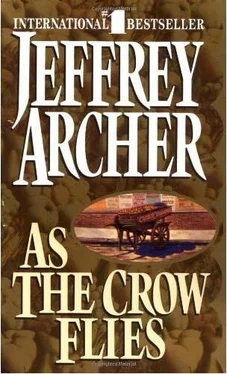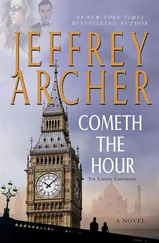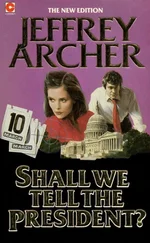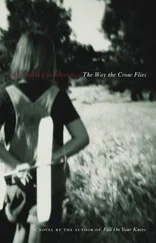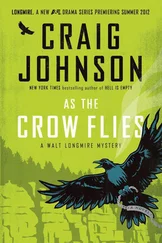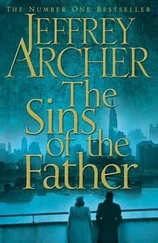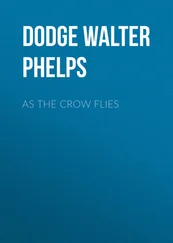"Twenty-five thousand," said Simon, turning again towards the Italian government representative.
"Thirty thousand." The cigarette was still emanating smoke: Mellon remained in the chase.
"Thirty-five thousand." I spotted a new bidder, sitting in the fourth row to my right: Mr. Randall, the manager of the Wildenstein Gallery in Bond Street.
"Forty thousand," said Simon as a fresh puff of smoke emanated from the back. We were past the estimate I had given Daphne, although no emotion showed on her face.
"Do I hear fifty thousand?" said Simon. This was far too big a hike at this stage in my opinion. Looking towards the box, I noticed that Simon's left hand was shaking.
"Fifty thousand," he repeated a little nervously, when a new bidder in the front row, whom I didn't recognize, started nodding furiously.
The cigarette puffed once again. "Fifty-five thousand."
"Sixty thousand." Simon had turned his attention back in the direction of the unknown bidder, who confirmed with a sharp nod that he remained in the hunt.
"Sixty-five thousand." The Mellon representative still kept puffing away, but when Simon turned his attention back to the bidder in the front row he received a sharp shake of the head.
"Sixty-five thousand then, the bid is at the back of the room. Sixty-five thousand, are there any more bidders?" Once again Simon looked towards the underbidder in the front row. "Then I'm offering the Canaletto at sixty-five thousand pounds, sixty-five thousand pounds for the second time, then it's sold for sixty-five thousand pounds." Simon brought the gavel down with a thud—less than two minutes after the first bid had been offered, and I marked ZIHHH in my catalogue as a round of applause spontaneously burst from the audience—something I had never experienced before at Number 1.
Noisy chatter broke out all over the room as Simon turned round to me and said in a low voice, "Sorry about the mistake, Becky," and I realized that the jump from forty to fifty thousand had been nothing more than a bout of auctioneer's nerves.
I began to compose a possible headline in tomorrow's papers: "Record amount paid for Canaletto in auction at Trumper's." Charlie would be pleased.
"Can't see Charlie's little picture fetching quite that sum," Simon added with a smile, as the Virgin Mary and Child replaced the Canaletto on the stand and he turned to face his audience once again.
"Quiet please," he said. "The next item, Lot Number 38 in your catalogue, is from the school of Bronzino." He scanned the room. "I have a bid of one hundred and fifty"—he paused for a second—"pounds for this lot. Can I ask for one hundred and seventy-five?" Daphne, whom I assumed was Charlie's plant, raised her hand and I stifled a smile. "One hundred and seventy-five pounds. Do I see two hundred?" Simon looked around hopefully but received no response. "Then I'll offer it for the first time at one hundred and seventy-five pounds, for the second time, for the third time then . . ."
But before Simon could bring the gavel down a stocky man with a brownish moustache and graying hair, dressed in a tweed jacket, checked shirt and a yellow tie, leaped up from the back of the room and shouted, "That painting is not 'from the school of,' it's an original Bronzino, and it was stolen from the Church of St. Augustine, near Reims, during the First World War."
Pandemonium broke out as people stared first at the man in the yellow tie, then at the little picture. Simon banged his gavel repeatedly, but could not regain control as the journalists began to scribble furiously across their pads. I glanced across to see Charlie and Daphne, their heads bowed in frantic conversation.
Once the outcry had died down, attention began to focus on the man who had made the claim. He remained standing in his place.
"I believe you are mistaken, sir," said Simon firmly. "As I can assure you, this painting has been known to the gallery for some years."
"And I assure you, sir," replied the man, "the painting is an original, and although I do not accuse the previous owner of being a thief, I can nevertheless prove it was stolen." Several in the audience immediately glanced down at their catalogues to see the name of the most recent owner. "From the private collection of Sir Charles Trumper" was printed in bold letters along the top line.
The hubbub, if anything, was now even louder, but still the man remained standing. I leaned forward and tugged Simon's trouser leg. He bent over and I whispered my decision in his ear. He banged his gavel several times and at last the audience began to quiet. I looked across at Charlie who was as white as a sheet, then at Daphne, who remained quite calm and was holding his hand. As I believed there had to be a simple explanation to the mystery, I felt curiously detached. When Simon had finally restored order he announced, "I am advised that this lot will be withdrawn until further notice."
"Lot Number 39," he added quickly as the man in the brown tweed jacket rose and hurriedly departed from the room, pursued by a gaggle of journalists.
None of the remaining twenty-one items reached their reserve prices, and when Simon brought the gavel down for the final time that afternoon, although we had broken every house record for an Italian sale, I was only too aware what the story in the next day's papers was bound to be. I looked across at Charlie who was obviously trying his best to appear unruffled. Instinctively I turned towards the chair which had been occupied by the man in the brown tweed jacket. The room was beginning to empty as people drifted towards the doors and I noticed for the first time that directly behind the chair sat an elderly lady—sitting bolt upright, leaning forward, her two hands resting on the head of a parasol. She was staring directly at me.
Once Mrs. Trentham was sure she had caught my eye, she rose serenely from her place and glided slowly out of the gallery.
The following morning the press had a field day. Despite the fact that neither Charlie nor I had made any statement our picture was on every front page except that of The Times alongside a picture of the little oil of the Virgin Mary and Child. There was hardly a mention of the Canaletto in the first ten paragraphs of any report and certainly no accompanying photograph.
The man who made the accusation had apparently disappeared without trace and the whole episode might have died down if Monsignor Pierre Guichot, the Bishop of Reims, hadn't agreed to be interviewed by Freddie Barker, the saleroom correspondent of the Daily Telegraph, who had uncovered the fact that Guichot had been the priest at the church where the original picture had hung. The bishop confirmed to Barker that the painting had indeed mysteriously disappeared during the Great War and, more important, he had at the time reported the theft to the appropriate section of the League of Nations responsible for seeing that, under the Geneva Convention, stolen works of art were returned to their rightful owners once hostilities had ceased. The bishop went on to say that of course he would recognize the picture if he ever saw it again—the colors, the brushwork, the serenity of the Virgin's face; indeed the genius of Bronzino's composition would remain clearly in his memory until the day he died. Barker quoted him word for damning word.
The Telegraph correspondent rang my office the day the interview appeared and informed me that his paper intended to fly the distinguished cleric over at their expense so that he could study the painting firsthand and thus establish its provenance beyond doubt. Our legal advisers warned us that we would be unwise not to allow the bishop to view the painting; to deny him access would be tantamount to acknowledging we were trying to hide something. Charlie agreed without hesitation and simply added, "Let the man see the picture. I'm confident that Tommy left that church with nothing other than a German officer's helmet."
Читать дальше
